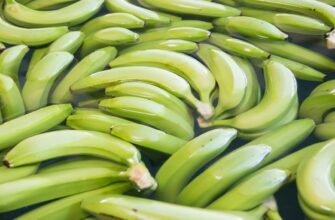- Introduction: Navigating International Investments
- What is SWISX?
- Key Features of SWISX:
- What is SCHF?
- Key Features of SCHF:
- SWISX vs SCHF: Critical Differences Breakdown
- 1. Index Composition & Coverage
- 2. Tax Efficiency
- 3. Trading Flexibility
- 4. Investment Minimums
- Which Fund Should You Choose?
- Consider SWISX If:
- Consider SCHF If:
- Performance Comparison: What the Data Shows
- FAQs: SWISX vs SCHF
- Final Verdict
Introduction: Navigating International Investments
When diversifying beyond U.S. markets, Schwab’s SWISX and SCHF stand out as popular low-cost options. Both target developed international equities but differ in structure and strategy. This comprehensive comparison breaks down their key features, performance nuances, and ideal use cases to help you determine which fund aligns with your investment goals.
What is SWISX?
The Schwab International Index Fund (SWISX) is a mutual fund tracking the MSCI EAFE Index. This index covers large and mid-cap companies across 21 developed markets outside North America, including Japan, UK, France, and Australia.
Key Features of SWISX:
- Structure: Traditional mutual fund
- Expense Ratio: 0.06%
- Minimum Investment: $0 for Schwab accounts
- Trading: Priced once daily after market close
- Holdings: ~950 stocks
- Dividends: Quarterly distributions
What is SCHF?
The Schwab International Equity ETF (SCHF) is an exchange-traded fund tracking the FTSE Developed ex US Index. It spans over 20 developed markets with broader coverage than SWISX, including South Korea.
Key Features of SCHF:
- Structure: ETF (trades like a stock)
- Expense Ratio: 0.06%
- Minimum Investment: One share (~$35)
- Trading: Intraday pricing
- Holdings: ~1,500 stocks
- Dividends: Quarterly distributions
SWISX vs SCHF: Critical Differences Breakdown
1. Index Composition & Coverage
- SWISX follows MSCI EAFE (excludes South Korea)
- SCHF follows FTSE Developed ex US (includes South Korea)
- SCHF holds 60% more companies for greater diversification
2. Tax Efficiency
- SCHF (ETF structure) minimizes capital gains distributions
- SWISX (mutual fund) may generate taxable capital gains annually
- Tax advantage makes SCHF preferable for taxable accounts
3. Trading Flexibility
- SCHF allows intraday trading with limit/stop orders
- SWISX executes trades at end-of-day NAV
- SCHF enables tactical adjustments during market hours
4. Investment Minimums
- SWISX: No minimum beyond brokerage requirements
- SCHF: Requires purchasing whole shares
- SWISX better for dollar-cost averaging small amounts
Which Fund Should You Choose?
Consider SWISX If:
- You prioritize automatic investing in dollar amounts
- Your holdings are in tax-advantaged accounts (e.g., IRA)
- You prefer “set-and-forget” mutual fund simplicity
Consider SCHF If:
- You invest in taxable brokerage accounts
- You want broader market exposure including South Korea
- You value intraday trading flexibility
Performance Comparison: What the Data Shows
Historically, both funds deliver nearly identical returns due to similar regional allocations and ultra-low fees. Over the past 5 years:
- SWISX annualized return: 4.2%
- SCHF annualized return: 4.3%
The minor performance gap stems from SCHF’s inclusion of South Korean stocks and slight structural advantages. Both significantly outperform their category averages.
FAQs: SWISX vs SCHF
Q: Can I hold both SWISX and SCHF in my portfolio?
A: Yes, but unnecessary. They cover nearly identical markets, so combining them creates overlap without meaningful diversification benefits.
Q: Which fund has better dividend yields?
A: Both yield approximately 3.2%. SCHF occasionally has marginally higher distributions due to broader holdings.
Q: Are these funds suitable for emerging markets exposure?
A: No. Both exclude emerging markets. Consider SCHE (Schwab Emerging Markets ETF) for that allocation.
Q: How do currency fluctuations affect these funds?
A: Both are exposed to foreign currency risk. Gains/losses from exchange rate movements impact returns alongside stock performance.
Q: Which fund is better for Roth IRAs?
A: Either works well in Roth IRAs since tax efficiency differences become irrelevant in tax-sheltered accounts.
Q: Do these funds hedge currency risk?
A: No. Both provide unhedged exposure, meaning returns include currency translation effects.
Q: How often are the underlying indexes rebalanced?
A: MSCI EAFE (SWISX) rebalances quarterly, while FTSE Developed ex US (SCHF) rebalances quarterly with ongoing reviews.
Final Verdict
SWISX and SCHF both deliver exceptional value for international diversification. For taxable accounts, SCHF’s ETF structure offers superior tax efficiency. For automated retirement investing in IRAs, SWISX provides simplicity. Evaluate your account type, investment style, and preference for South Korean exposure to make the optimal choice. With identical expense ratios and robust diversification, you can’t go wrong with either as your core international holding.








